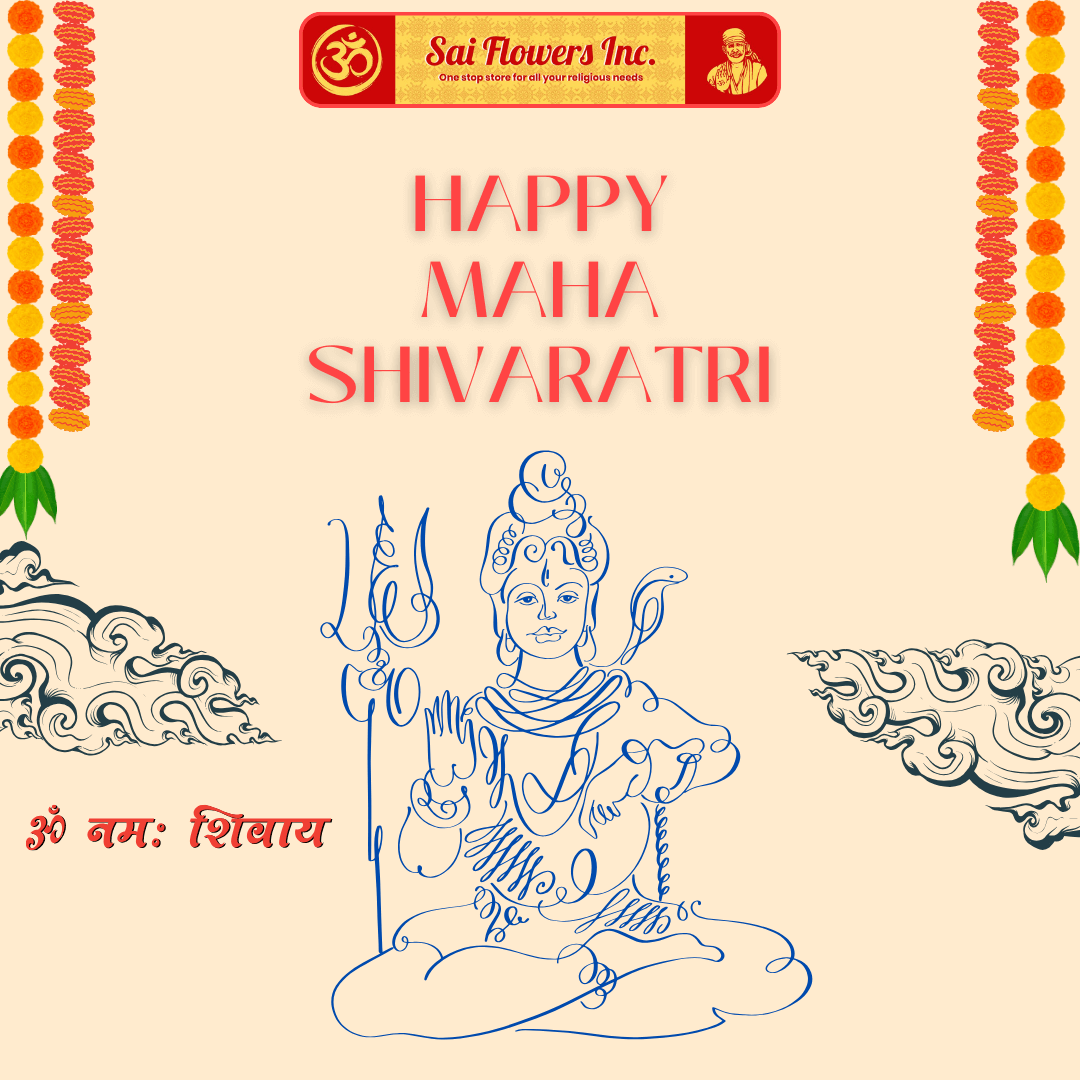About Maha Shivratri
Maha Shivaratri Puja, or Shivratri Puja meaning the "Great Night of Shiva, is a major Hindu festival honouring Lord Shiva. According to the Hindu calendar, it occurs on the fourteenth lunar day, or Chaturdashi, of the Krishna Paksha, or dark fortnight, in the month of Magha. This corresponds to either February or March in the calendar of the United States.
Observations:
Fasting: While some devotees abstain from certain foods, others keep a strict fast.
Jagaran: Chanting mantras like "Om Namah Shivaya" and praying through the night.
Puja: Bringing the Shivalinga—a symbolic image of Shiva—Flowers, fruits, leaves, and milk in exchange for prayers.
Temple visits: For special darshan and rituals, devotees go to Shiva temples.
Meditation: Asking Shiva's blessings and considering spiritual development.
Particular Components of Abhishekam:
Water: The main component of the abhishekam is frequently pure water, which represents cleansing and purity.
Milk: Milk is a symbol of abundance, nourishment, and purity. When performing the abhishekam, it is poured over the Shiva Linga.
Dahi (yoghurt): Yoghurt has calming and cooling qualities. It represents the mind and soul becoming calmer.
Honey: Honey is a symbol of purity and sweetness. It is thought to draw blessings and good energy.
Sugar: Sugar is a symbol of sweetness and contentment in existence.
Coconut Water: This drink represents fertility, prosperity, and purity. It is made as a sacred offering during the abhishekam.
Sandalwood Paste: Sandalwood paste is thought to have a calming effect on the mind and is well-known for its cooling qualities. When performing the abhishekam, it is applied to the Shiva Linga.
Bilva Leaves (Bel Patra): Lord Shiva regards bilva leaves as sacred. It is said that offering these leaves to Lord Shiva during the abhishekam will appease him and bring him blessings.
Vibhuti, also known as Holy Ash, is a symbol of purity and disengagement from materialistic desires. It is presented in an effort to find freedom and safety.
ghee, is revered in Hindu ceremonies. It is offered to invoke heavenly blessings and protection, and it symbolises the element of fire.
How to Perform POOJA.
Clean clothes, preferably white or bhagva (orange/pitambari) coloured dhoti or kurta, should be worn after taking an early morning bath.
You can do the puja at home if you have a Shiv Linga.
Collect all the necessary ingredients for puja, such as sugar, yoghurt, milk, ghee, honey, and water.
Use the Shiva Linga for abhishek while using the Shiv puja samagri, also called Panchamrut.
Offer Fresh flowers, flower garlands, sandalwood paste, bilva leaves (bilva patra), Aarti with ghee wicks, and dhup (incense) after the abhishek.
As you perform the puja and aarti, chant Shiva's favourite mantra, Om Namah Shivaya.
You can recite Mahamrtutyunjay Mantra, Dwadash Jyotirling Stotram, Shiv Stuti, Bilva Mantra, Shiv Tandava Stotram, Shiv Manas Puja, and Shiv Panchakshara Stotram in addition to Om Namah Shivay.
Common Flowers to Offer Lord Shiva :
Lotus (Kamal): When devotees present Lord Shiva with lotus flowers, he is happy because lotus flowers are revered and regarded as pure.
Rose (Gulaab): In Shiva Puja, red roses are used as a symbol of devotion and love.
Marigold (Gendha): Shiva Puja also makes use of yellow marigold flowers.
Jasmine (Mogra): Jasmine flowers have a lovely scent and are used to create a relaxing atmosphere during Shiva Puja.
Champaka (Champa): When devotees present Lord Shiva with Champaka flowers, he is happy. Champaka flowers are either white or yellow.
Lord Shiva is known to be fond of Bilva leaves, also known as Bel Patra, and is considered highly auspicious to offer during Shiva Puja.
 .
. 
 .
. 
 .
. 

